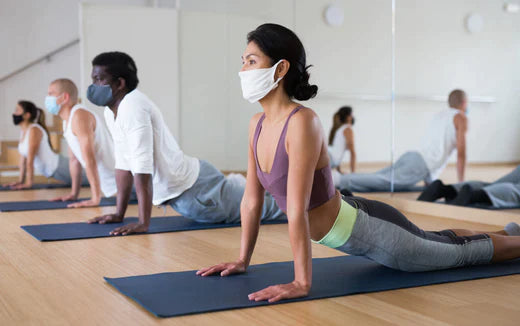
blog
|January 3, 2025
Share :
Yoga Therapy for Menopause
by Mona Jauhar RDN, LD
Menopause is a metamorphosis, not a disease. Why must we look for a medicinal cure for it then?
With increased life expectancy, today, women spend one-third of their life after menopause. Thus more attention is needed towards peri- and post-menopausal symptoms. There is a a wealth of evidence suggesting that yoga can make navigating perimenopause and menopause easier. Yoga has been used as a therapeutic tool for better health and control and cure several mind and body issues, including cardiovascular, adrenal and cognitive ailments. Yogic asanas do wonders to women’s reproductive health and the integrated approach of yoga therapy has proved to improve hot flashes, night sweats, palpitations and anxiety… all central to menopausal stress. Pavanmuktasana, Bhujangasana (Cobra pose), Suptvakrasana, Hastapadasana (forward bend), Chakrasana (upward facing bow pose) and Paschimottanasana are best known for flexibility and hormonal functions.
No more suffering
A woman officially reaches menopause when she's completed one year without menstruating; the average age is 51. But the roller coaster that is perimenopause can begin as much as 8 years earlier. During perimenopause, fluctuating estrogen and progesterone levels can trigger a myriad of uncomfortable symptoms. Among the most common are hot flashes, anxiety and irritability, insomnia, fatigue, depression and mood swings, memory lapses, and an erratic menstrual cycle. While Hormonal Replacement Therapy is recommended to most, women are now becoming aware of the serious side-effects of synthetic hormones. Major studies have linked them to an increased risk of breast cancer, heart disease, strokes, and other life-threatening conditions. Considering the limitation of HRT, the present need is to explore new options for the management of menopausal symptoms in the form of non-hormonal drug therapy and non-pharmacological measures.
Restoring balance
The American Journal of Obstetrics and Gynecology found that perimeno-pausal and menopausal women who combined a 90-minute weekly yoga class with a daily 20-minute home practice reported fewer hot flashes, improved sex lives, and a better quality of life. According to yoga practitioners, if you are familiar with restorative poses, then you have the best menopause medicine at your disposal. Cooling and Restorative postures can relax the nervous system and may improve the functioning of the endocrine system (especially the hypothalamus, the pituitary gland, the thyroid, and the parathyroid gland), which helps the body adapt to hormonal fluctuations. While gentle backbends and heart opening poses can help respiration and produce feelings of positivity and light and reclining and restorative poses can aid in fighting fatigue and insomnia.
Breathing helps
Yoga therapy also involves breathing techniques and mindful meditation practises to manage main menopause symptoms. Paced breathing, also called pranayama, and meditation release stress held in the body, and helps you to connect to the parasympathetic nervous system that enables you to ‘rest and digest’ thereby reducing anxiety, improving sleep and food digestion. A menopause yoga class should ideally cover menopause nutrition, natural remedies, vitamins and supplements and other lifestyle changes you need to make apart from including yoga in your routine.
Menopause is natural. Don’t fear it. Face it and fight its severity.






